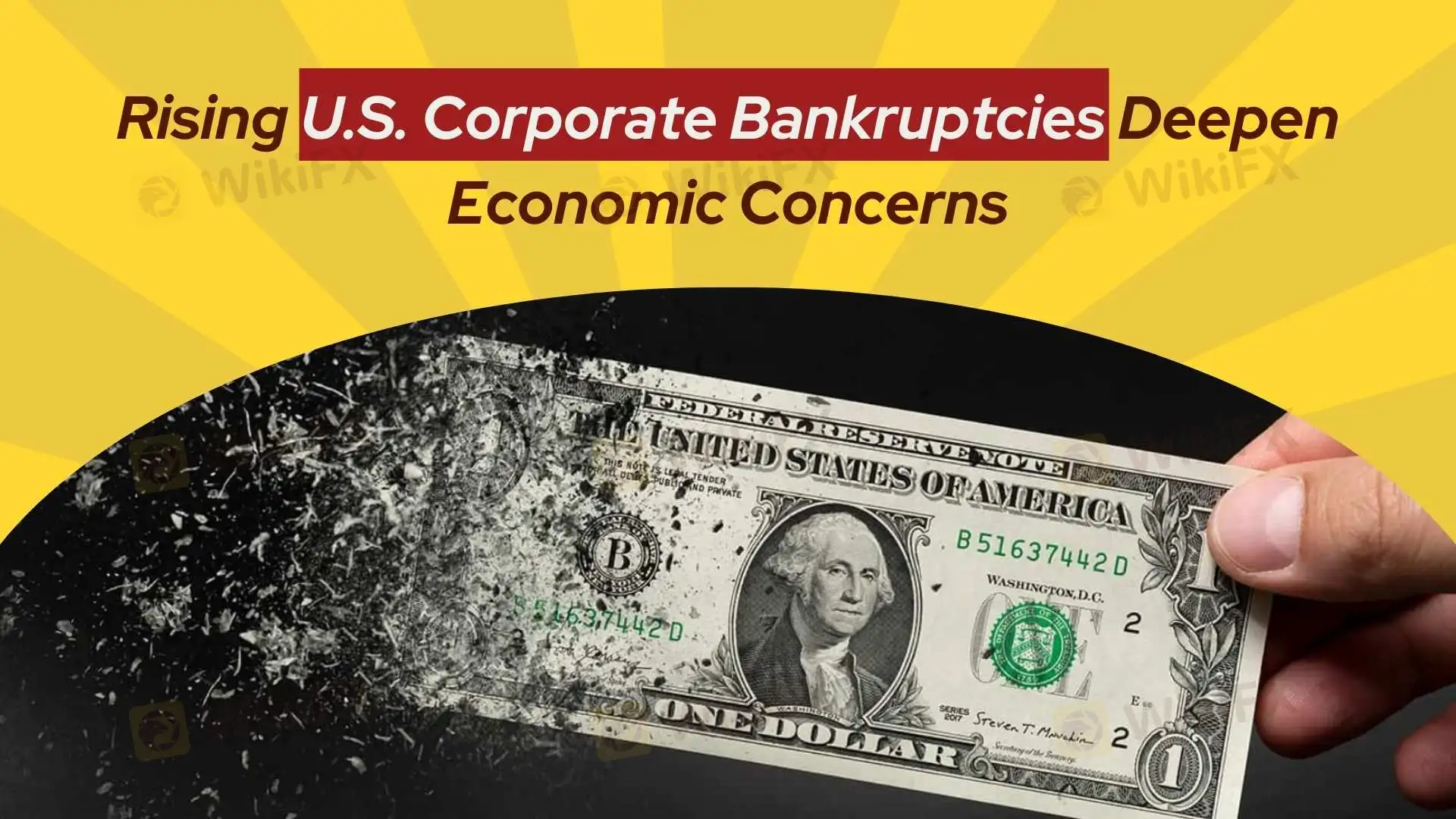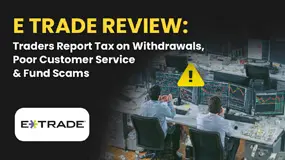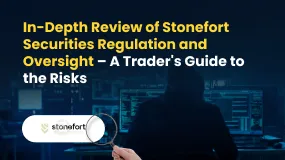简体中文
繁體中文
English
Pусский
日本語
ภาษาไทย
Tiếng Việt
Bahasa Indonesia
Español
हिन्दी
Filippiiniläinen
Français
Deutsch
Português
Türkçe
한국어
العربية
Rising U.S. Corporate Bankruptcies Deepen Economic Concerns
Abstract:In 2024, 686 U.S. companies filed for bankruptcy, marking the highest number since 2010.

Record-High Bankruptcies Since 2010
In 2024, a total of 686 U.S. companies filed for bankruptcy, marking an 8% year-on-year increase and reaching the highest number since 2010, when 828 companies filed. According to data from S&P Global Market Intelligence, this surge underscores the compounding effects of economic slowdown and corporate financial struggles, revealing deep challenges to economic recovery.

Among the bankruptcies, at least 30 companies carried debt exceeding $1 billion, spanning multiple industries. Party City‘s bankruptcy highlighted the struggles of the retail sector under weak demand and rising costs, while Tupperware’s crisis symbolized the shrinking household goods market. Red Lobsters insolvency further underscored the profitability challenges in the service sector, particularly in the restaurant industry, amid inflationary pressures.
Accelerating Bankruptcy Trends
A review of recent corporate bankruptcy filings reveals a clear acceleration in the trend. From 2021 to 2022, U.S. corporate bankruptcies totaled 777. This number jumped to 636 in 2023 and has already reached 686 in 2024, reflecting a rapid year-over-year increase.

Fitch Ratings also reported that in 2024, out-of-court restructurings outnumbered bankruptcies at a ratio of approximately 2:1. However, recovery rates for first-lien loans issued by companies with over $100 million in debt fell to their lowest levels since 2016, indicating rising risk exposure for creditors and heightened concerns about financial system stability.
Weak Consumer Demand and Debt Pressure
The wave of corporate bankruptcies is largely driven by sluggish consumer demand. EY Chief Economist Gregory Daco noted that rising costs for goods and services are suppressing consumer spending, particularly impacting middle- and low-income households. This trend extends beyond specific industries, affecting retail, services, and manufacturing broadly. Consumers are becoming more cautious, cutting back on non-essential expenses, while businesses face both weak demand and rising supply chain costs.
Meanwhile, the high-interest-rate environment has increased corporate debt burdens, contributing significantly to the bankruptcy surge. Although the Federal Reserve has begun easing rates to relieve financial pressures, its planned 50-basis-point cut in 2025 is unlikely to fully alleviate the financial strain on businesses. Many companies, caught between maturing debt and rising financing costs, are losing the ability to sustain operations.
Multi-Dimensional Impacts of Bankruptcy
Corporate bankruptcies represent more than just individual financial failures—they can trigger ripple effects with broad economic and social consequences. Economically, a wave of bankruptcies weakens market competitiveness and productivity. The insolvency of iconic companies in certain industries can further erode investor confidence and market stability.
Socially, bankruptcies have a significant impact on employment. While overall U.S. Unemployment remains relatively low, localized crises in specific industries and regions may arise from widespread corporate failures. Moreover, declining consumer confidence could further slow economic recovery.
Opportunities and Challenges Behind the Bankruptcy Wave
Despite its apparent risks, the bankruptcy wave could present opportunities for some companies to reset their strategies. Through out-of-court restructurings or bankruptcy protection, businesses may reduce debt burdens and optimize operations, laying a foundation for future recovery. However, for creditors and investors, the uncertainties involved in this process pose significant risks.
Looking ahead, whether the U.S. economy can emerge from the bankruptcy wave amid high interest rates and inflationary pressures will depend on several factors. These include the Federal Reserve‘s ability to balance inflation control with lower funding costs, potential government fiscal policies to support businesses, and the market’s capacity to drive growth through innovation and industrial transformation.
Disclaimer:
The views in this article only represent the author's personal views, and do not constitute investment advice on this platform. This platform does not guarantee the accuracy, completeness and timeliness of the information in the article, and will not be liable for any loss caused by the use of or reliance on the information in the article.
Read more

E TRADE Review: Traders Report Tax on Withdrawals, Poor Customer Service & Fund Scams
Has your E Trade forex trading account been charged a withholding tax fee? Did your account get blocked because of multiple deposits? Did you have to constantly call the officials to unblock your account? Failed to open a premium savings account despite submitting multiple documents? Is fund transfer too much of a hassle at E Trade? Did you find the E Trade customer support service not helpful? In this E Trade review article, we have shared certain complaints. Take a look!

mBank Exposed: Top Reasons Why Customers are Giving Thumbs Down to This Bank
Do you find mBank services too slow or unresponsive? Do you find your account getting blocked? Failing to access your account online due to several systemic glitches? Can’t perform the transactions on the mBank app? Do you also witness inappropriate stop-level trade execution by the financial services provider? You are not alone! Frustrated by these unfortunate circumstances, many of its clients have shared negative mBank reviews online. In this article, we have shared some of the reviews. Read on!

In-Depth Uniglobe Markets Commission Fees and Spreads Analysis – What Traders Should Really Know
For experienced traders, the cost of execution is a critical factor in broker selection. Low spreads, fair commissions, and transparent pricing can be the difference between a profitable and a losing strategy over the long term. This has led many to scrutinize the offerings of brokers like Uniglobe Markets, which presents a tiered account structure promising competitive conditions. However, a professional evaluation demands more than a surface-level look at marketing claims. It requires a deep, data-driven analysis of the real trading costs, set against the backdrop of the broker's operational integrity and safety. This comprehensive Uniglobe Markets commission fees and spreads analysis will deconstruct the broker's pricing model, examining its account types, typical spreads, commission policies, and potential ancillary costs. Using data primarily sourced from the global broker inquiry platform WikiFX, we will provide a clear-eyed view of the Uniglobe Markets spreads commissions prici

In-Depth Review of Stonefort Securities Regulation and Oversight – A Trader's Guide to the Risks
For experienced traders, the process of selecting a new broker transcends a simple comparison of spreads and leverage. It is a meticulous due diligence exercise where the integrity of the broker's regulatory framework is paramount. Stonefort Securities, a relatively new entrant in the crowded brokerage space, presents a complex and often contradictory profile. On one hand, it boasts a modern MT5 platform and a stream of positive user testimonials. On the other hand, it is shadowed by severe regulatory warnings that question the very foundation of its operations. This in-depth review focuses on the core issue for any long-term trader: Stonefort Securities regulation and oversight. We will dissect the broker's corporate structure, scrutinize its licensing claims, and analyze what the data implies for trader protection and fund security. For traders evaluating whether Stonefort Securities is a trustworthy partner, understanding these details is not just important—it is essential.
WikiFX Broker
Latest News
WikiFX's New Evaluation of ATM Capital LTD: Does its License Protect the Arab Investor?
How a Fake Moomoo Ad Led to the “New Dream Voyage 5” Scam
Is Axi Legit? A Data-Driven Analysis of Its Regulatory Standing and Trader Feedback
Trive Investigation: High Score, Hidden Risk - The Profit Paradox
In-Depth Uniglobe Markets Commission Fees and Spreads Analysis – What Traders Should Really Know
FXPesa Review: Are Traders Facing High Slippage, Fund Losses & Withdrawal Denials?
CMC Markets Australia Revenue Surges 34%, But High-Net-Worth Clients Face Tax Phishing Threat
Bessent believes there won't be a recession in 2026 but says some sectors are challenged
mBank Exposed: Top Reasons Why Customers are Giving Thumbs Down to This Bank
Young Singaporean Trader Grew USD 52 into a USD 107,700 Portfolio
Currency Calculator



